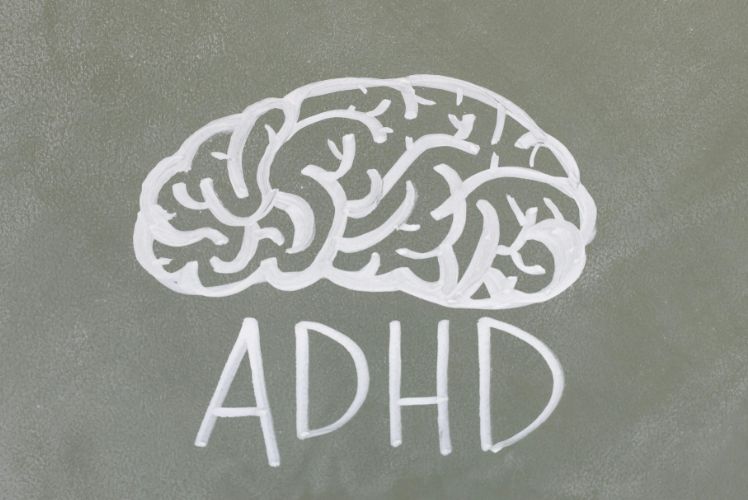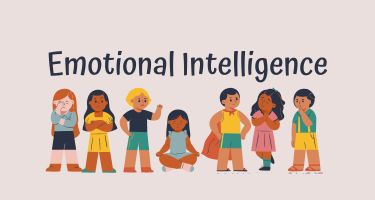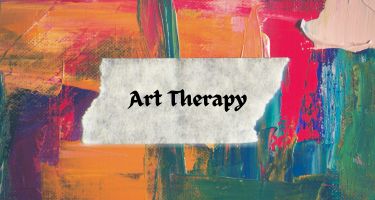In today's fast-paced world, the term ADHD often gets tossed around, sometimes casually, sometimes with a hint of concern. But what exactly is ADHD, and why does it seem to be more prevalent than ever before?
Let me paint a picture for you: Imagine yourself in a crowded coffee shop, urgently trying to concentrate on your work or studies. However, despite the talk and clinking of cups, your mind feels like a pinball machine, bouncing from one thought to the next with relentless energy. This situation is more than just a hypothetical; it offers a glimpse into the daily problems of people living with ADHD, an illness that affects millions around the world.
According to recent CDC data, ADHD is one of the most common neurological diseases, affecting roughly 9.4% of children and 4.4% of adults in the United States. These statistics demonstrate the prevalence of ADHD in our culture, emphasising the need for improved understanding and awareness.
The purpose of the article is to explore the complex nature of ADHD, from its basic neurobiology to its influence on daily living. By offering information about the causes, symptoms, and treatment of ADHD, we hope to develop empathy, remove myths, and encourage people to handle the challenges of ADHD with resilience and compassion. So let us plunge in and discover the intriguing world of ADHD together.
ADHD, or Attention Deficit Hyperactivity Disorder, is a neurological condition marked by persistent patterns of inattention, hyperactivity, and impulsivity that greatly interfere with everyday functioning and development. It's more than just having trouble paying attention or being extremely enthusiastic; it's a multidimensional condition that affects people in all aspects of their lives.
ADHD has three main symptoms:
Lack of attention: People with ADHD frequently struggle to focus, pay attention to tasks, and organise their thoughts and things. They may look forgetful, easily distracted, and disorganised, causing issues in academic, occupational, and social settings.
Hyperactivity is defined by excessive physical movement and restlessness. People with ADHD may have difficulties sitting quietly, waiting their turn, or participating in calm activities. Their restless energy may be expressed by fidgeting, wriggling, or excessive talking.
Impulsivity can be summarised by acting on an impulse without considering the implications. Individuals with ADHD may blurt out answers in class, disrupt conversations, or make snap judgements without thinking them through. Impulsive behaviour can make it difficult to regulate one's emotions, make decisions, and interact with others.
It is vital to recognise that ADHD manifests differently in people, with three major subtypes:
Individuals with the Predominantly Inattentive Type (ADHD-PI) suffer with keeping focus, finishing tasks, and staying organised. They may appear forgetful, daydreamy, or uninterested.
Individuals with the Predominantly Hyperactive-Impulsive Type (ADHD-PH) may struggle to sit still, wait their turn, or control their urges. They may be agitated, talkative, and inclined to act on instinct without thinking about the implications.
Combined Type (ADHD-C): This subtype includes both inattentive and hyperactive-impulsive symptoms. Individuals may have a wide range of symptoms, differing in severity and persistence across different areas of functioning.
Understanding the Biological and Environmental Factors
Biological Factors: ADHD is caused by genetics, brain structure, and neurotransmitter function, as well as environmental variables.
Genetics: Research has found that ADHD runs in families, indicating a substantial hereditary component. ADHD vulnerability has been linked to specific genes that regulate dopamine, transport neurotransmitters, and form brain structures.
Brain Structure: Structural imaging studies have found changes in brain regions linked to ADHD, including the prefrontal cortex and basal ganglia. Changes in volume, connectivity, and neurotransmitter function in these areas could contribute to ADHD symptoms.
ADHD causes is believed to be based on imbalance of dopamine and norepinephrine neurotransmission. Imbalances in these neurotransmitters can impact attention, arousal, and impulse control, all of which contribute to ADHD's fundamental symptoms.
Environmental Factors: Environmental effects, particularly prenatal exposure to toxins and mother smoking, may play an important role in ADHD development.
Prenatal Toxin Exposure: Heavy metals such as lead and mercury, as well as organophosphate pesticides, have been related to an increased risk of ADHD in offspring. These poisons can impair foetal brain development, resulting in neurodevelopmental disorders.
Maternal Smoking: Smoking during pregnancy exposes the foetus to nicotine and carbon monoxide, which can impair foetal brain development and raise the chance of ADHD. Nicotine impairs neurotransmitter systems that regulate attention and impulse control, whilst carbon monoxide lowers oxygen transport to the developing brain, jeopardising cellular metabolism.
Certain factors may raise the risk of getting ADHD, offering information about its aetiology and relevant prevention techniques.
Premature birth puts preterm infants at a higher chance of having ADHD, which could be linked to changes in brain development and neurotransmitter activity.
Individuals with a family history of ADHD are more likely to develop the illness themselves, emphasising the role of genetics in ADHD susceptibility.
Prenatal exposure to mother stress has been linked to an increased risk of ADHD in kids, implying that environmental factors such as maternal stress may influence ADHD development.
We get a better knowledge of the disorder's complicated aetiology by investigating the interaction of biological and environmental components, as well as identifying particular risk factors connected with ADHD. Recognising these influences enables focused interventions and preventive actions to reduce the incidence of ADHD and promote optimum neurodevelopment in children.
A Comprehensive Approach for Diagnosing ADHD
ADHD is diagnosed by a multi-step process that includes detailed evaluations, a review of the patient's medical history, and behavioural observations.
Healthcare professionals usually conduct detailed assessments to learn about the patient's symptoms, developmental history, and functional impairments. This may entail conducting interviews with the individual, parents, teachers, and other key stakeholders.
It is critical to review the individual's medical history, including prenatal and perinatal variables, developmental milestones, and previous medical disorders, in order to rule out other potential reasons of ADHD-like symptoms.
Direct observation of an individual's behaviour in various situations, such as home, school, and community, can provide useful information about the presence and severity of ADHD symptoms, as well as the impact on everyday functioning.
The Diagnostic and Statistical Manual of Mental Disorders, Fifth Edition (DSM-5) specifies the criteria used by healthcare providers to diagnose ADHD.
Symptoms of inattention include difficulty maintaining sustained attention, organising, and completing tasks, as well as frequent forgetfulness and distractibility.
Hyperactivity symptoms include excessive fidgeting, restlessness, and trouble engaging in peaceful activities. Impulsivity symptoms include acting on impulse without regard for the consequences, such as interrupting people, blurting out replies, or participating in unsafe behaviours.
Symptoms must last at least six months and seriously affect social, academic, or occupational functioning.
Despite established diagnostic criteria, identifying ADHD can be difficult owing to a variety of variables.
ADHD symptoms are subjective and may overlap with other psychiatric or developmental disorders, resulting in diagnostic uncertainty.
Symptoms might change between settings (e.g., home, school), making it difficult to judge their consistency and severity.
Cultural norms and expectations might influence how ADHD symptoms are presented and interpreted, potentially leading to diagnostic biases.
Overdiagnosis of ADHD may arise owing to symptom misunderstanding or pressure to prescribe medication, whereas underdiagnosis may stem from a lack of access to healthcare or stigma associated with mental health.
Addressing these issues requires a comprehensive strategy that takes into account individual characteristics, cultural considerations, and contextual elements. Healthcare providers can ensure accurate assessments and suitable interventions for ADHD patients by taking a comprehensive and culturally sensitive approach to diagnosis.
Navigating the Path to ADHD Treatment and Management
Living with ADHD presents a number of problems, but with the appropriate combination of interventions and support, people can learn to thrive. Here's a comprehensive strategy to treatment and management, which includes medication, therapy, behavioural interventions, and lifestyle changes:
A thorough treatment plan for ADHD frequently includes a multimodal approach that addresses people' various requirements. This could include a combination of medication, therapy, behavioural interventions, and lifestyle changes suited to the individual's specific strengths and limitations. Individuals can improve their quality of life by combining different coping mechanisms.
Medication can help manage ADHD symptoms, including impulsivity and hyperactivity, while also increasing attention and concentration. Stimulants (methylphenidate, amphetamine) and non-stimulants (atomoxetine, guanfacine) are commonly prescribed drugs for ADHD. These drugs act by boosting dopamine and norepinephrine levels in the brain. While they can be quite beneficial for many people, it is critical to consider potential advantages and adverse effects with a healthcare expert before beginning therapy.
Behavioural treatment is essential in teaching people with ADHD practical skills and methods for effectively managing their symptoms. Cognitive-behavioral therapy (CBT) and behavioural interventions aim to teach coping mechanisms, organisational skills, time management approaches, and social strategies. These therapies enable people to recognise and challenge negative thought patterns, increase problem-solving abilities, and boost self-regulation and emotional resilience.
In addition to medication and therapy, lifestyle changes can help with ADHD treatment by improving general well-being and symptom control. Regular exercise, enough sleep, and a well-balanced diet can help regulate mood, increase attention, and decrease hyperactivity. Structured routines, realistic goals, and minimising environmental distractions can all help you focus and be more productive. Furthermore, mindfulness techniques such as meditation and deep breathing exercises might help people improve their self-awareness and emotional control skills.
Individuals with ADHD can achieve their full potential and thrive in many areas of life by adopting a multimodal approach to treatment and management. Navigating the obstacles of ADHD may become a path of growth, resilience, and empowerment when the correct interventions and support are used.
Embracing Life with ADHD: Thriving Regardless of the Challenges
Living with ADHD can bring daily challenges, but with the correct methods and support, people can live meaningful and successful lives. Here's how to handle your ADHD experience with resilience and empowerment:
Coping strategies:
Calendars and planners are useful for keeping track of appointments, deadlines, and tasks. Use reminders and alarms to stay organised and on track. Break jobs Down into Smaller Steps: To avoid feeling overwhelmed, divide complex jobs into manageable steps. Concentrate on one task at a time, and acknowledge tiny triumphs along the way.
Create a Structured Routine: Set times for activities such as waking up, eating, working/studying, and relaxing. Consistency and predictability can assist reduce impulsive behaviour and enhance time management.
Minimise Distractions: Make the setting favourable to attention by reducing clutter, noise, and digital disruptions. utilise noise-cancelling headphones, set up a quiet workstation, or utilise programmes to block distracting websites.
Seek Support from Family and Friends: Be upfront and honest with your family, friends, and coworkers about your ADHD issues and requirements. When you need encouragement, understanding, or practical aid, turn to your support network.
Raise Awareness and Destigmatization: Promote ADHD awareness and destigmatization by sharing your experiences and educating others about the realities of living with ADHD. Challenge stereotypes and encourage empathy and compassion for people with ADHD.
Seek Supportive Communities: Join ADHD support groups, online forums, or advocacy organisations to get support, information, and encouragement from people who understand your situation. Participate in community activities, awareness campaigns, and advocacy initiatives to raise your profile and have a good influence.
Success Stories:
Inspiring Examples: Share inspirational examples about people with ADHD who have achieved success in a variety of fields, including business, academia, sports, and the arts. These success examples show that ADHD does not limit one's potential and emphasise the value of effort, inventiveness, and resilience in overcoming obstacles.
Seek for role models and mentors who have excelled with ADHD and can provide direction, support, and encouragement as you embark on your own journey. Learn from their experiences, tactics, and insights to overcome obstacles and capitalise on your own strengths.
Individuals with ADHD can navigate life's problems with confidence, resilience, and empowerment by adopting coping skills, advocating for awareness and destigmatization, and gaining inspiration from success stories. Remember that while ADHD presents challenges, it also provides distinct talents and chances for growth.
Useful resources:
Books:
”Driven to Distraction (Revised): Recognising and Coping with Attention Deficit Disorder" by Edward M. Hallowell and John J. Ratey.
"Taking Charge of Adult ADHD" by Russell A. Barkley.
"The ADHD Effect on Marriage: Understand and Rebuild Your Relationship in Six Steps" is written by Melissa Orlov.
"Smart but Scattered: The Revolutionary 'Executive Skills' Approach to Helping Kids Reach Their Potential" by Peg Dawson and Richard Guare
"Delivered from Distraction: Getting the Most Out of Life with Attention Deficit Disorder" by Edward M. Hallowell and John J. Ratey.
Websites:
CHADD (Children and Adults with Attention-Deficit/Hyperactivity Disorder) is a major non-profit organisation that supports, advocates for, and educates people with ADHD and their families. Website: chadd.org.
ADDitude Magazine is an online resource that provides expert advice, articles, webinars, and community forums for people with ADHD and their families. Website: additudemag.com.
Understood: A comprehensive website that offers tools and help to parents of children with learning and attention challenges, including ADHD. Website: understood.org.
The National Institute of Mental Health (NIMH) provides information on ADHD research, treatment alternatives, and clinical trials. Website: nimh.nih.gov.
Organisations:
ADDitude Magazine: In addition to their online offerings, ADDitude hosts webinars and virtual events about ADHD-related issues. Website: additudemag.com.
Children and Adults with Attention-Deficit/Hyperactivity Disorder (CHADD): Offers support groups, educational resources, and advocacy for those with ADHD. Website: chadd.org.
Attention Deficit Disorder Association (ADDA): Provides support, resources, and a network for adults with ADHD. Website: add.org. The National Resource Centre on ADHD is a CHADD programme that provides information, resources, and support to people with ADHD and their families. Website: help4adhd.org.
These resources provide essential information, support, and a sense of community for people with ADHD, their families, and carers. Whether you're looking for instructional materials, support groups, or expert counsel, these resources will help you navigate the ADHD path with confidence and empowerment.





















